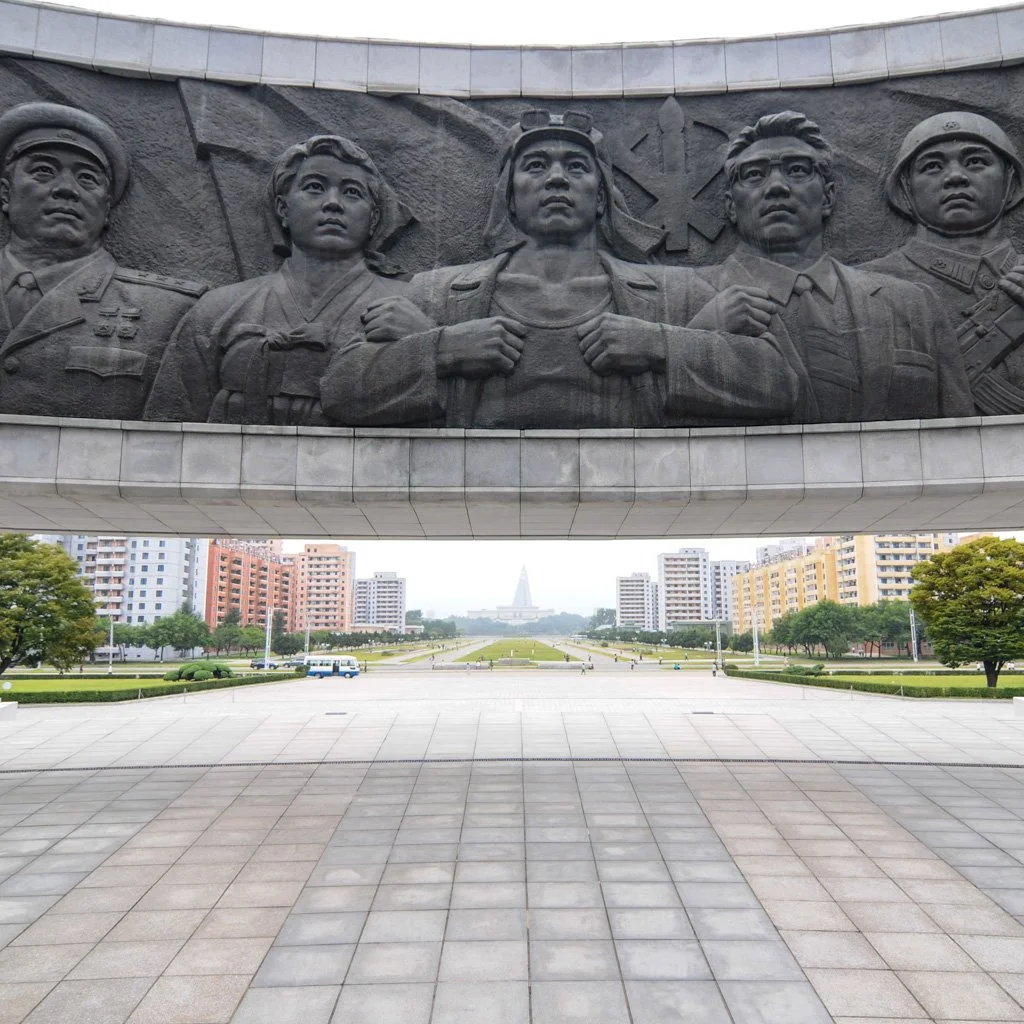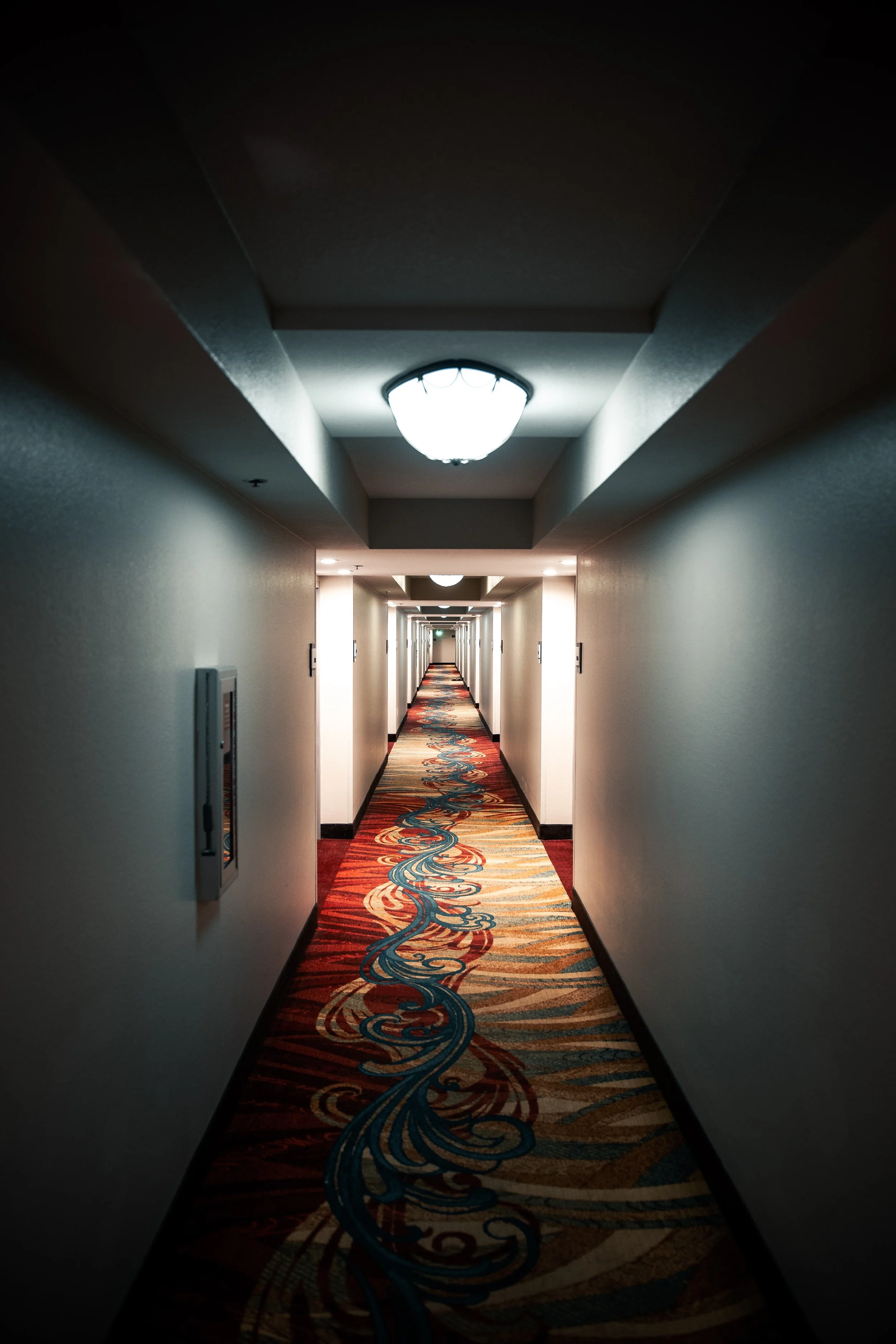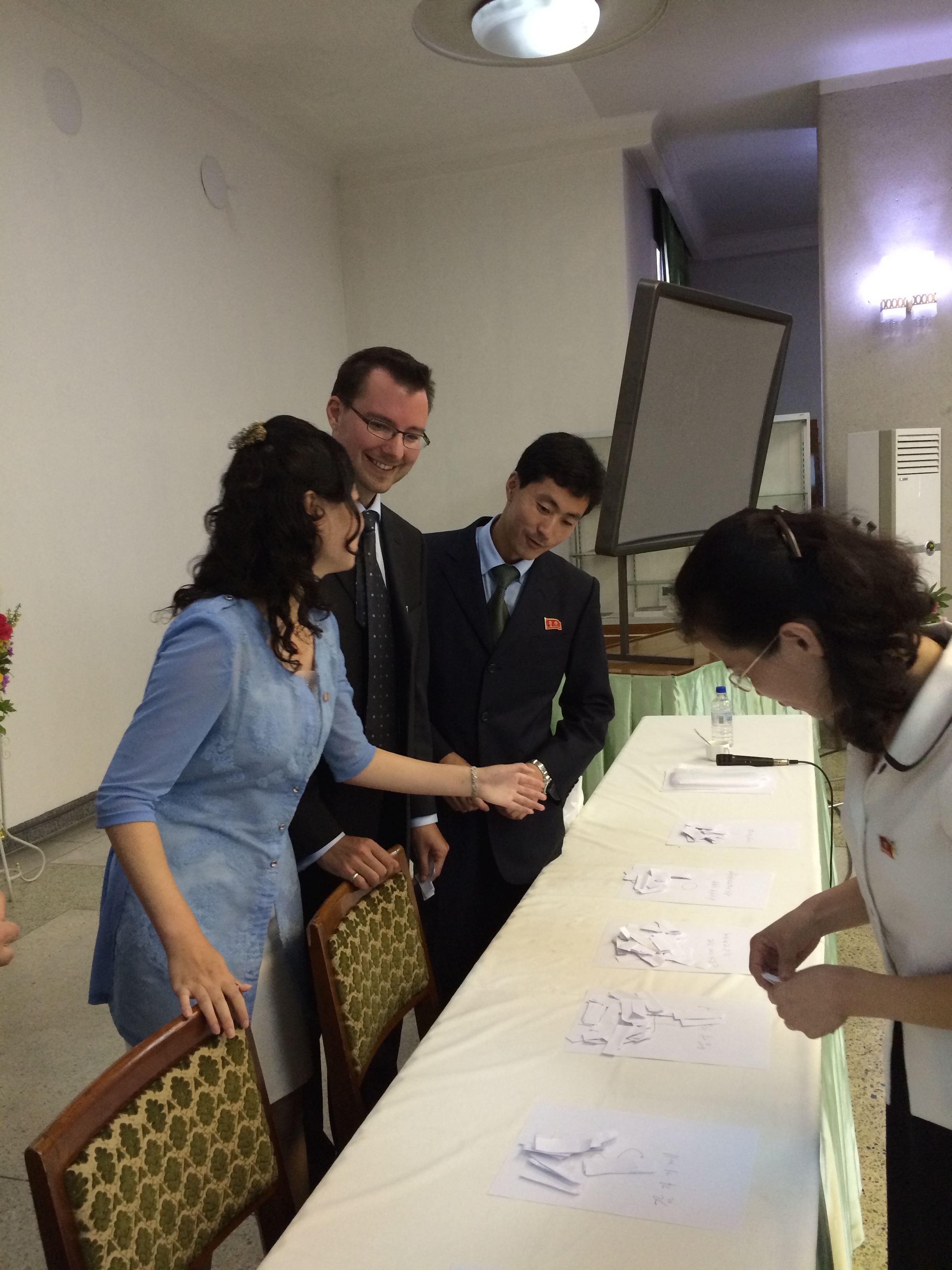"Yoboseyo?"
"Oh, hey, its Pyongyang. We're wondering if you'd be fine with like 3 of our most important guys coming to check out the Asian Games finale thing tomorrow. Maybe there could be an important meeting in what will look like a broom cupboard on the news?"
"Um, yeah. Sounds good! We'll check for tiny rooms in the Incheon area."
OK, so maybe it didn't go down like that. And maybe both sides had days or even weeks of visibility on the high level meeting that took place between North and South last week. But the planning was not most guessworthy element. What might it mean? Why now? What's going on?
Andray took a stab at those questions in an article on 38north.org this week. Click here to read the original, longer version that also tackles what the domestic value of the Koreas' on-field performances hold.
On the penultimate day of the competition, notifying Seoul that three of its highest officials wanted to attend the closing ceremony the next day. Seoul granted permission to Kim Yang Gon, Hwang Pyong So and Choe Ryong Hae, sparking a media frenzy and wide speculation about the reasons for the visit. The trio had lunch with South Korean Unification Minister Ryoo Kihl-jae and Defense Minister Kim Kwan-jin. They are reported to have said that Kim Jong Un’s health was not an issue and to have delivered a message of “warm greetings” from Kim Jong Un to President Park Geun-hye. An October surprise, indeed.
That might all be interesting, but did Pyongyang put anything of substance on the table to back up a potential charm offensive? It is not yet known, though something may emerge at high-level talks agreed upon for later this month or in early November. This proposal is also somewhat of a surprise, given that North Korea rejected a similar proposal made by Seoul in August.
Seoul, while looking to shift its North Korea policy somewhat, is wary of moving too fast and has not said much about the visit. If an improvement in relations takes place in the rest of Park’s term, we may be able to point to this meeting as an important part of that process.
The trip certainly signals willingness on North Korea’s part for more direct communication. The factors motivating Pyongyang to make this gesture remain unclear at this point, but it could be a combination of several things.
First, Pyongyang wants more non-Chinese investment and understands, in particular, that its grand plans for Wonsan as a tourist destination will ultimately not get far without South Korean capital and visitors. This is especially true if Japanese connections to Wonsan are not rehabilitated. Promising DPRK-Japan talks earlier this year on the abduction issue seem to have stalled as Pyongyang has delayed a key report due in early autumn. Pyongyang may have decided the chances of getting the abduction issue right are too low to justify the risk. Creating an outreach effort to the ROK could be an alternative.
It could also be a test of Park Geun-hye’s trustpolitik as she comes up on the mid-point of her term: this is around the time that she would need to start an initiative if she wants to see it bear fruit under her administration. However, Park has consistently said that aid and investment into the North would increase if steps towards resolving the nuclear issue were taken. We’ll know later if Pyongyang is able to put anything on the table that doesn’t undermine its ‘Byungjin Line’ (dual nuclear/economic development) but this type of reciprocation is something she feels she can work with. This is a narrow window though, and in initial follow-up talks Pyongyang may just be testing to see what it can get while avoiding the nuclear issue for as long as possible.
If she does appear to compromise, it quickly becomes a test of ROK-US relations. Washington was not so keen on Japan’s solo outreach to the DPRK earlier this year; it likely will not be thrilled if its other key ally breaks ranks as well. Pyongyang is always happy to foment divisions between Seoul and Washington when it can.
Finally, it shows Beijing that Pyongyang is ready to ‘play nice’ with its neighbors. After serious stresses between the two allies in the past 18 months, reaching out to Tokyo and Seoul shows China that the DPRK doesn’t have to be a disruptive force while at the same time signaling that Pyongyang may not always be as beholden to China’s economic might as it is today.
Sports diplomacy only works when both governments are actively seeking some sort of shift in relations that an athletic event can help facilitate. It is far from clear that this is what is happening, but suddenly it is a prospect that we are now compelled to watch.
Even if this new North-South dialogue goes nowhere, for both countries the Asian Games will leave a domestic legacy—this is particularly clear in the North, where the victories will be featured and used to justify the sports policy and promote nationalist sentiments. Southerners will join the list of griping citizens around the world who get stuck with the bill for costly sporting events while corporate sponsors walk away with the profits. At the same time, there will be some residual feel-good factor from besting Japan in the medal table and further cementing the ROK’s status as a regional power.
Athletes from both Koreas have and will continue to make great progress on the field. Let’s see now if their leaders can make a little progress off the field as well.






















